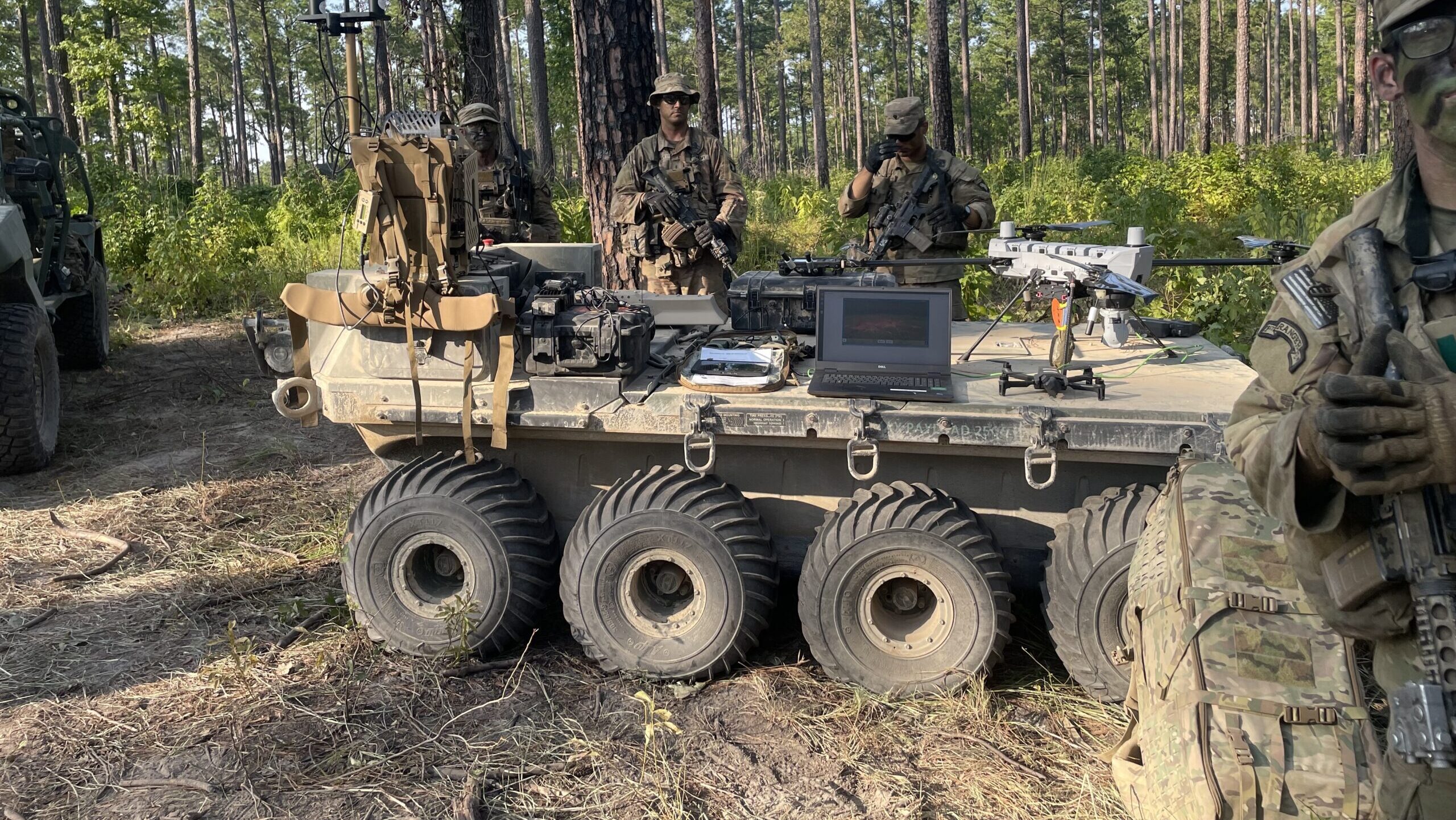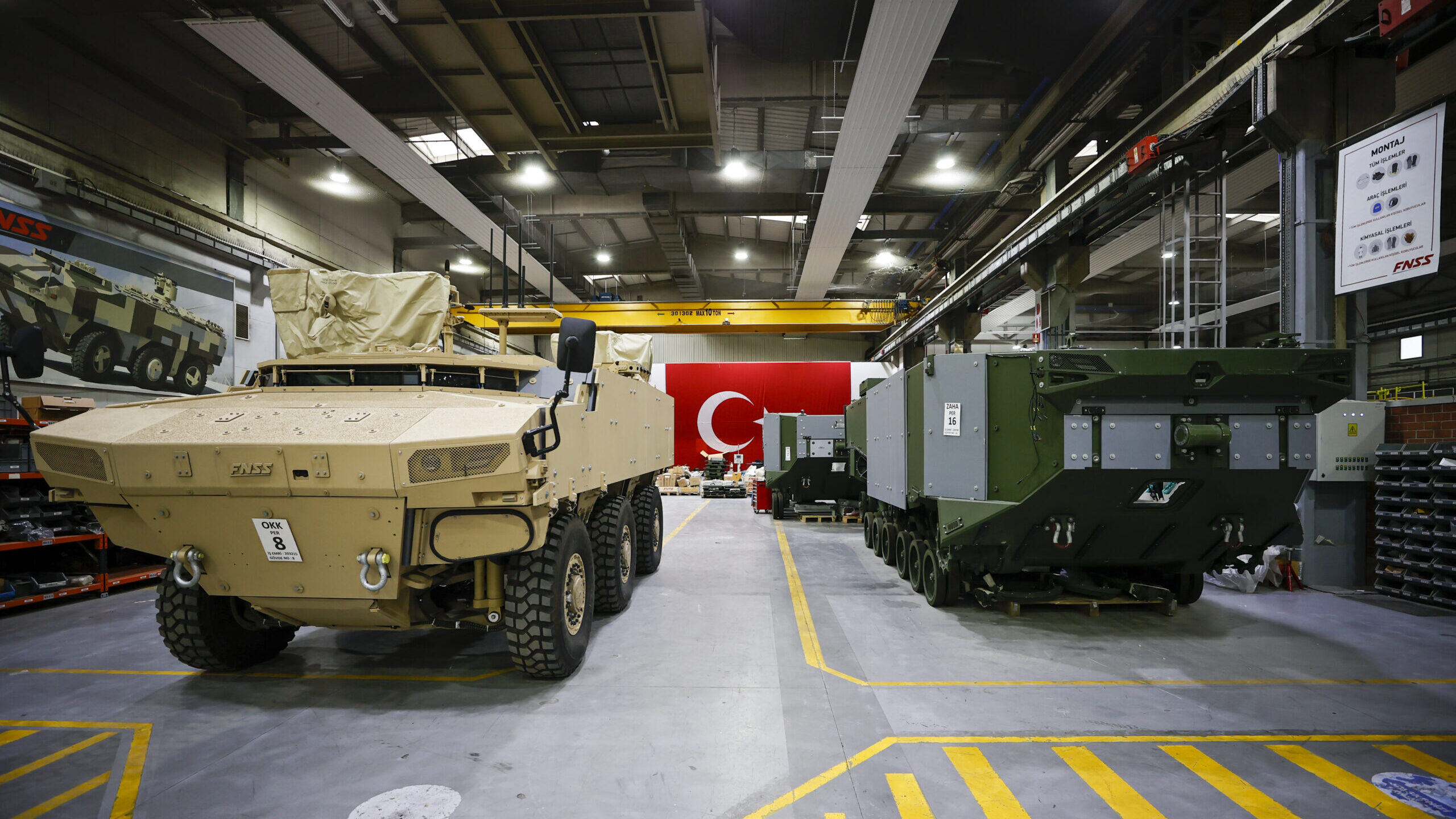
US Army soldiers with the 101st Airborne Division use SMETs during a recent training exercise. (Ashely Roque/Breaking Defense)
SAVANNAH, Ga. — As the Army attempts to shore up and upgrade its battlefield network capabilities in what’s known as C2 Fix, a trio of officers involved in the program have returned from exercises in the field with a laundry list of issues the initiative should tackle.
But that’s a good thing, one of the officers said, because that means the service is prioritizing the soldiers who will actually use the tech when it matters most.
“A big portion of the huge benefits of the program is the focus on the end user,” Lt. Col. Jon Nielsen, commander of the 2nd Battalion in the 101st Airborne Division, told the audience at the Army’s 13th Technical Exchange Meeting today in Savannah, Ga. “Something I’ve never experienced within the Army is that the actual process, the actual capabilities driven by the end user, the squad leader, the platoon leader, platoon sergeant, first sergeant, company level leaders that are utilizing the equipment or having feedback prior to each one of those major training exercises. Then [they] also follow up afterwards to adjust the things that we saw that didn’t work, and then integrate them as part of that effort.”
Soldiers from the 101st as well as the 10th Mountain Division have been called to participate in the service’s C2 Fix initiative — the Army’s strategy to make its current network operations more efficient so they can “fight tonight.” C2 Fix is also part of the service’s larger transformation in contact project that the same divisions have participated in over the past year.
According to Nielsen and two of his colleagues, end users are asking for:
- better edge computing
- more proliferated low-Earth orbit satellite (pLEO) mobile solutions
- more compact radio equipment
- smoother, faster process for integrating new tech on old platforms
When it comes to edge computing, the Army has long acknowledged the modern battlefield is saturated with data from sources like high-definition drone video feeds, which has created a bandwidth bottleneck. One solution is to do more computing and analysis of that data “at the edge,” or in the field, so it doesn’t have to be sent off anywhere in the first place, or at least so that only key data must be transmitted.
RELATED: Empowered edge vs. the centralization trap: Who will weild AI better, the US or China?
Right now, Nielsen suggested current edge computing options aren’t enough.
“We still have a reliance on the server stack, and I know that we’re moving towards working towards finding an edge compute solution, but it certainly slows down the data transmission,” he said. “We found that to be something that’s hindered us in each one of our collective training exercises. So we need to find an edge compute solution that allows us to transmit data quickly.”
Similarly, Nielsen bemoaned limited options for communication over embattled or disconnected networks. For that, he said, the Army needs more pLEO satellite communication solutions — especially useful in the face of electronic warfare.
“Our ability to have some pLEO solution on the move is something we need. There’s a requirement to have mobile C2 [command and control] or mobile CP [command post] platforms at every edge, at every echelon. So whether that be company up to division, we’re a lot lighter than we were when we went to JRTC [Joint Readiness Training Center] in January. Then when we went back again in August, some of our headquarters elements went from tents all the way down to vehicles,” Nielsen said. “It certainly increases our lethality.”
Related: Army using ‘transformation in contact’ to make case for new weapons, formation decisions
Fellow panelist Col. David Lamborn, 2nd Brigade Commander, 25th Infantry Division, said that the biggest improvement he wants to see with C2 Fix is also radio-related: the need for more condensed radio equipment that doesn’t rely on connections through “fragile” cables.
“What I am concerned about with our current C2 architecture is some of the complexity that exists,” Lamborn said. “If you’re moving into the environment, moving tactically, quite often, if you’ve got a radio and it’s hooked up to a wedge and it’s hooked up to a battery, those are connected with some kind of expensive and somewhat fragile cables. When those things are hooked up in series, all it takes is one of those components to break and the complexity of the the whole system stops working.”
Lamborn added that it would be helpful for industry to develop such systems in a way that “streamlines” and “integrates” all of those components into one.
“As you design and deploy capabilities out to us, having them integrated so that they’re not exposed and we don’t have exposed cables that are inevitably going to get broken as soldiers move through the field,” he said.
RELATED: Enough ‘one trick ponies’: Marine special ops specialists want industry help to fuse tech
Also on the topic of hardware, Lt. Col. Joe Kaminski, the G6 at the 3rd Infantry Division, said that one issue that he wants to see solved with C2 Fix is the incompatibility with older weapons systems with new technology systems.
“We all can agree that technology probably changes about every 18 months,” Kaminski said. “One of the constraints we have with that transformative change is the weapons platforms for the armored elements usually doesn’t change for about 30 years, and so we have integrated a lot of those capabilities within the systems, within these track vehicle platforms.
“The problem that we’re running into now is the safety certification for any upgrades or changes that need to happen, and that can take a very, very long process and a very expensive process. So one of the things we’re pushing back up and identifying is, how do we decouple actually, technology that would transform every three to five years on a platform that doesn’t change for 30 to 40 years?”











